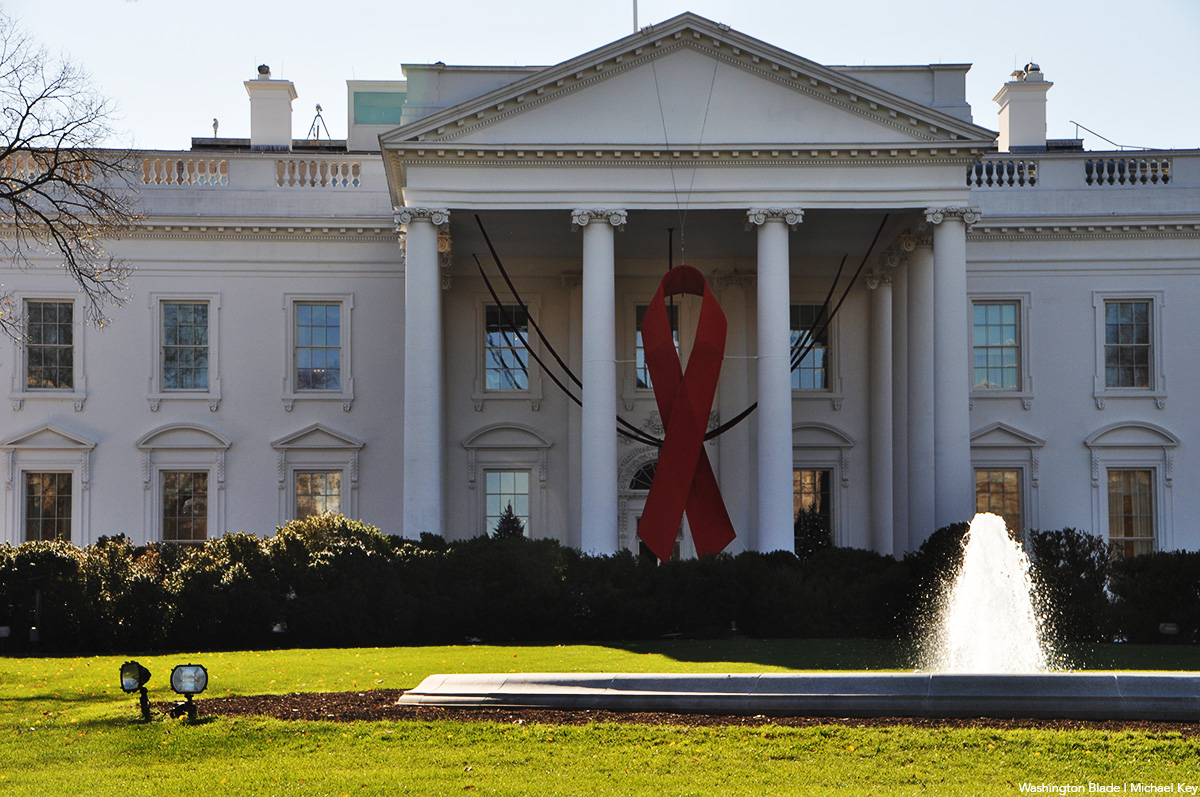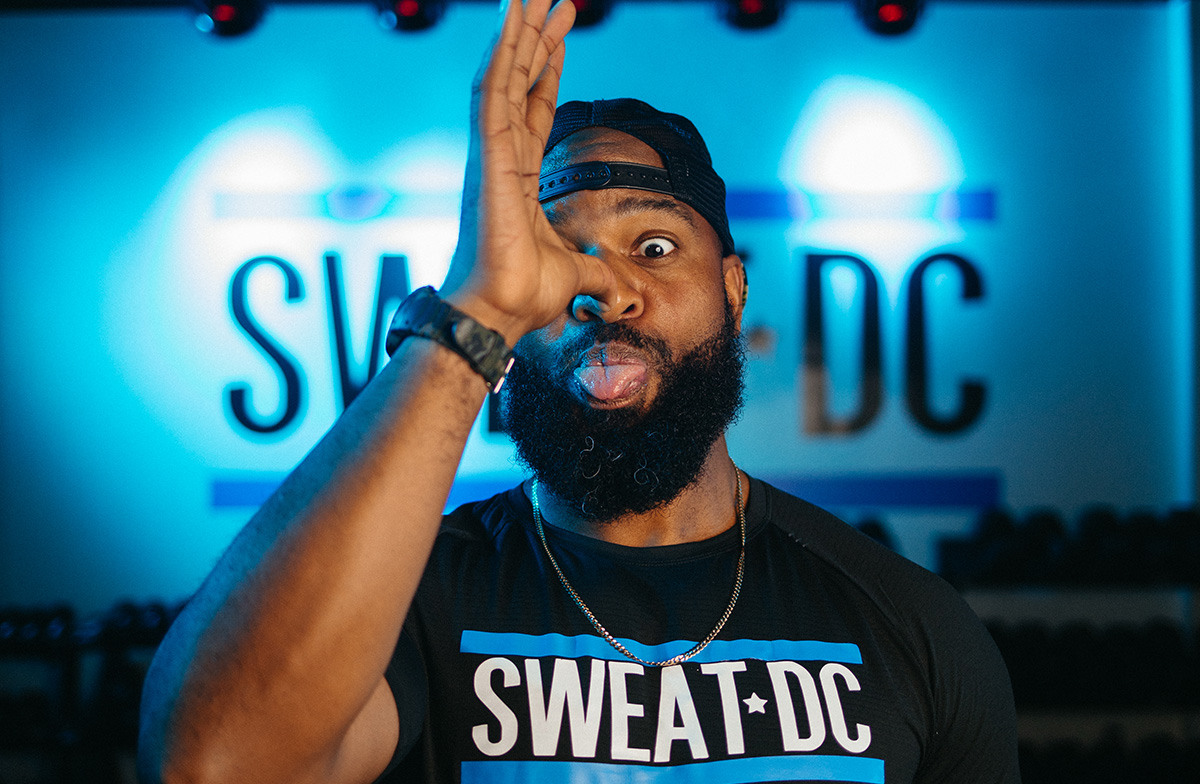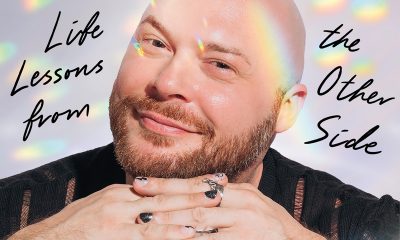Opinions
The intergenerational impact of aging with HIV
Dec. 1 is World AIDS Day

BY TERRI L. WILDER | Today, Dec. 1, 2024, the global HIV community marks the 37th annual World AIDS Day (WAD). Here in the U.S., the face of HIV looks quite different than it did on the first WAD in 1988. It is estimated that more than 50 percent of people living with HIV (PLHIV) in the U.S. are aged 50 and older — an age that must have seemed impossible to the countless young people diagnosed during the height of the epidemic. Some were diagnosed later in life, whereas others have lived with HIV for many years — in some cases, since birth.
While their stories differ, PLHIV all face a common challenge: facing the impact of aging with HIV. The theme of WAD 2024 is “Collective action: Sustain and accelerate HIV progress.” A key to this progress is uplifting and understanding the real stories and lived realities of those growing older with HIV and using their experiences to guide proactive policy.
The spread of misinformation
In 1981, the first cases of what would later be identified as HIV (human immunodeficiency virus, the cause of AIDS) were reported. Three years later, Nathan Townsend was diagnosed with HIV at age 30.
When he got the call with the news, he was shocked. Early reports of HIV often suggested that only specific communities — most notably white gay men — were vulnerable to HIV. However, widespread misinformation contributed to the Black community later accounting for nearly half of all AIDS-related deaths, according to a 1999 CDC report.
Then, Nathan received more grim news: He was told by his doctors he only had two years to live. Believing he was going to die, Nathan purchased a casket and paid for his future funeral — one that thankfully didn’t come.
Today, Nathan is one of the growing number of older people who live with HIV, with researchers estimating that 70 percent of those living with the virus will be 50 and older by 2030.
The stigma of HIV diagnosis
As awareness of HIV grew in the late 1980s, many Americans expressed stigmatizing attitudes. A 1985 Gallup poll found that 28 percent of Americans reported that they or someone they knew had avoided places where gay men might be present because of HIV; by 1986, the percentage had grown to 44 percent.
This was the beginning of the endless stigma faced by those living with HIV — something Porchia Dees and Grissel Granados experienced.
Porchia was diagnosed at two months old through perinatal transmission and is part of the first generation of children born with HIV. Doctors indicated that Porchia wouldn’t live to see her fifth birthday. Fortunately, Porchia would prove them wrong.
Porchia still remembers the stigma she felt when she learned of her diagnosis in sixth grade from a social worker at the Children’s Hospital in Los Angeles. She recalled being pulled aside and asked if she was sexually active before being explicitly warned against having any sexual activity. The next time she heard about HIV was in a sex education class, which furthered the stigmatizing message that she would never live a “normal” life.
Today, Porchia is an advocate, changing people’s perspectives on what it means to live with HIV, but it does not come without challenges. At 38-years-old, Porchia is more focused on her health after witnessing long-term HIV survivors battle kidney failure, renal failure, bone density issues, cognitive issues, breast cancer, and shortened lifespans.
Grissel, another lifetime HIV survivor who acquired HIV through perinatal transmission, considers herself lucky that her mother explained the diagnosis to her at a young age. Despite her family’s support and honesty about HIV, a now 38-year-old Grissel still had to grow up with fear and uncertainty while now facing the fear of early mortality.
Social isolation
When Rev. Claude Bowen was 33 years old, he received a phone call that would change his life: His HIV test came back positive.
Believing he only had two years to live, he hid himself away, self-medicating and isolating himself from his support systems. These coping mechanisms served as an escape from his reality. But eventually, he realized that this was his reality and wanted to fight. He started getting involved in HIV education and advocacy work after his best friend disappeared in the late 80s. He would soon get a phone call, learning his friend had died of complications related to HIV.
For the LGBTQ+ community, losing friends and chosen family during this time became all too common. From 1984-1986, over 42,500 people in the U.S. died from HIV-related causes, which doesn’t account for individuals who died from complications related to HIV whose families or loved ones asked that the cause of death not be disclosed. For older PLHIV, this devastating loss of community has contributed to social isolation and loneliness.
Living and aging with HIV
With access to care, HIV is no longer a death sentence, thanks to scientific advancements in medications and treatments. Whether in your 70s like Nathan or 38 like Portia, many health challenges now faced by people living with HIV are more related to aging than to HIV-related illnesses.
Aging with HIV comes with a greater risk of health problems from inflammation from the virus and the long-term use of HIV medications. Many people aging with HIV also face the “dual stigma” of ageism and HIV-related stigma, leading to high rates of anxiety, depression, and substance use disorders. Furthermore, many have lost friends and family to the HIV epidemic, leading to loneliness and increased risks of cognitive decline and other medical conditions in older adults, as found in a 2023 study from Frontiers in Aging Neuroscience.
Acknowledging the challenges that people aging with HIV face helps ensure they get the necessary support to live a fulfilling and thriving life.
Taking action
The Older Americans Act (OAA) funds aging services and supports for older people across the country to age-in-place. In 2024, the federal Administration for Community Living (ACL) issued new regulations ensuring that LGBTQ+ older people and older people living with HIV could have more equitable access to the programs funded under the OAA. Yet, there is still more work that could be done to ensure equitable access for those living with HIV. Congress is currently in the process of reauthorizing the law.
While we face a challenging time in modern politics, we must urge our legislators to do whatever they can to ensure that the OAA and similar laws support PLHIV. And all of us must work with our state and area agencies on aging to robustly implement the latest OAA regulations, to ensure that all older people, including LGBTQ+ older people and those living with HIV, get the services and supports they need to remain independent.
States can also do more to protect people living with HIV by passing state-level LGBTQ+ and HIV Long-term Care Bills of Rights, as advocated for by activists and organizations, including SAGE, the world’s oldest and largest advocacy organization dedicated to improving the lives of LGBTQ+ elders. These laws ensure that LGBTQ+ older people and those aging with HIV receive equitable treatment in long-term care facilities. For instance, one long-term survivor, 82, who asked to remain anonymous for this piece, credits his doctor for his excellent treatment and care, saying, “It is tremendous to have someone in your corner that you can talk to openly and ask questions” without fear of judgment.
Finally, we must advance policies that address the needs of all those living with HIV and AIDS, no matter their ages.
The time is now
The impact of living with HIV is different for every generation. From lifetime survivors like Porchia and Grissel to those aging with HIV like Claude and Nathan, access to community support, services, and HIV-specific healthcare is essential for quality of life across generations.
This WAD, HIV advocates, aging organizations, and stakeholders must stand with local legislators to ensure care, protection, and support for all PLHIV.
Terri L. Wilder (She/Her), MSW, is the HIV/Aging policy advocate at SAGE, the world’s oldest and largest advocacy organization dedicated to improving the lives of LGBTQ+ elders. In her role, she implements SAGE’s federal and state HIV/aging policy priorities.
Terri has worked in HIV care since 1989, providing social services, directing education programs for clients and medical providers, and advocating for policy change. She is an experienced public speaker who has presented at conferences worldwide on various HIV topics. Terri is also an award-winning writer who has published on multiple HIV-related topics through The Body’s website, among others. Terri served on the New York Governor’s Task Force to End AIDS (EtE) and the New York Governor’s Hepatitis C Elimination Taskforce, where she contributed to the development of state plans to end the HIV epidemic and eliminate Hepatitis C.
She is a member of the New York State Department of Health AIDS Advisory Council EtE Subcommittee, and the Minnesota Council for HIV/AIDS Care and Prevention (MCHACP). Terri has been recognized for her work through the POZ 100: Celebrating Women edition of POZ magazine (2017), as well as awards from the NYS DOH AIDS Institute, AIDS Survival Project, and Bridging Access to Care, Inc.
Opinions
Trump’s ‘American people derangement syndrome’
Voters must stop him before he destroys democracy

Trump, in a deranged, evil, post on X, accused Rob Reiner of suffering from “Trump derangement syndrome.” I guess that would apply to everyone who thinks Trump is an evil, dangerous, asshole who is trying to destroy our society as we know it. With that definition, I would surmise the felon himself suffers from “American people derangement syndrome,” because clearly, he thinks we are all evil, dumb, assholes, and a danger to him, and the fascists surrounding him.
His speech to the nation was called bellicose, by the New York Times. I would call it unhinged and vile. It was a plea to the populace, containing a pack of lies, to continue to believe his lies, and distortions. We all know the felon is full of shit when telling us prices have come down. We go shopping every week to feed ourselves and our families, even if he doesn’t. We have to pay heating and rent bills each month. We know since he became president nearly a year ago, all those costs have gone up. Talk to any honest person at a chamber of commerce in your area, and they will tell you small businesses are suffering. They will tell you the felon’s tariffs are hurting everyone. We know he is screwing the poor and middle class; trying to end SNAP benefits, and refusing to help with healthcare costs. All the while giving tax breaks to corporations, and the rich. People are not dumb Mr. Felon, and your lies are no longer resonating.
The evil, deranged, felon in the White House lives in a world where he can do favors for his friends in return for getting them to donate hundreds of millions for his follies. He is a grifter who hosts dinners for rich people to make money for his crypto business. He is said to have made more than $3 billon since his election. This while farmers are going broke, and losing their farms, because his tariffs screwed them. He is undermining vaccines and caused a measles epidemic in the United States. This a disease eradicated before he came into office. He ended grants to research cures for HIV/AIDS, Parkinson’s, Alzheimer’s, cancer, and an assortment of childhood diseases. He stopped research grants for mRNA vaccines. When we have the next pandemic, and it will come, that will result in millions of deaths, all on his head.
He is embarrassing the United States around the world. They watch him give unhinged speeches, raise and lower tariffs irrationally, screw our allies, and now trying to interfere in their elections. He is bombing fishing boats, claiming they are carrying drugs, with no proof at all. Then he releases from prison the man who brought more cocaine into the country than anyone else ever did. All this is what the lying, cheating, grifting, evil, heartless, felon in the White House, is doing to you, the good people of the United States, and the world. He sounds more unhinged every day while trying to blame everything on former President Biden and Democrats, who haven’t controlled the levers of government in nearly a year.
I know the results of the 2025 elections must scare him. They show him the majority no longer accept his BS. We will go into 2026, and the midterm elections, with our eyes wide open. He wants to be King and we don’t want kings in our country. He has what his chief of staff calls, “an alcoholic’s personality” “because he believes there’s nothing he can’t do.” She is right about that, but we will call him on it in the next election. We will say clearly, with our voices, and our votes, “no more, enough is enough.” We are taking back the country and will throw out anyone in office who still supports him.
We try and forgive those who voted for him, as long as they now recognize he lied to them, and is screwing them. Young people must understand they will suffer their whole lives because he is a climate denier. Latino and Hispanic voters, who believed he was going to support them, now see he wants to deport them. Farmers who once thought he supported them, until he screwed them. We must now all join together, and show the evil SOB in the White House, who is building his grand ballroom, taking planes, and other gifts, and pardoning the guilty; his time is coming to an end. Again, we will go into the voting booth, eyes wide open, and vote to stop him before he completely destroys our lives, our families, our democracy, and brings fascism to our country.
Peter Rosenstein is a longtime LGBTQ rights and Democratic Party activist.
Opinions
Using movement to boost your mental health during holidays
Sometimes the goal is simply steadiness

We’re told this is the season of Ho Ho Ho. Joy. Family. Home.
But let’s be honest. The holidays are stressful for almost everyone. Even in the best situations, this time of year comes with pressure. Expectations. Family dynamics. Financial stress. Comparison. The emotional labor of trying to make everything feel warm and magical while quietly holding a lot inside.
For some people, home is comfort. For others, it’s complicated. A place where old roles come back fast. Where you’re expected to be a version of yourself that no longer fits. Where love exists, but understanding feels incomplete.
And for many of us in the LGBTQ community, that stress can carry extra weight. Sitting at tables where parts of who you are feel debated instead of celebrated. Navigating politics and beliefs that don’t feel abstract, but personal. Deciding when to speak up, when to stay quiet, and when to just go refill your drink. Grief changes how the holidays land.
For me, the holidays have often been quiet. I’m deeply grateful for the family I still have and the support they’ve given me, and I also need to be real. I’ve been jealous. Jealous AF. Jealous that I can’t go home and hug my mother. Jealous that my dad isn’t there. Jealous when I see the cozy movie version of the holidays play out in other people’s lives. Not because they don’t deserve it, but because I wish I had it too.
Long before fitness became my career, the gym was my sanctuary. Without movement, these seasons would have been much harder. My body changed as a byproduct, sure, but what movement gave me first was something more important. Stability. A place to put grief. A way to move stress out of my body when words weren’t enough. Stress doesn’t just live in the mind.
We like to think stress is something we can talk through or think our way out of. But stress and anxiety live in the body. Chronic stress has been shown to disrupt sleep, weaken the immune system, and show up physically as tension, fatigue, and pain. When it’s left unaddressed, it doesn’t just affect how we feel emotionally. It affects how we function.
Most people don’t come into fitness because they’re thriving. After 20 years of coaching, almost everyone I’ve met started with physical goals. Lose weight. Build muscle. Look different. What they don’t always see is how stress, burnout, emotional eating, and putting everyone else first got them there. Most people aren’t failing. They’re exhausted.
When we talk about mental health, we think about therapy, medication, boundaries, vacations, or staying away from that one family member who always finds a way to press your buttons. All of those things matter. They save lives. But movement is rarely treated as part of the mental health plan, even though every single person who moves consistently feels better mentally. Not perfect. Just better. As my business partner Chase likes to say, sexy is the side effect. This isn’t just empathy. It’s a strategy.
The holidays don’t sneak up on us. We know which dinners will be hard. We know which brunches will test our patience. We know which days we’ll feel alone. So instead of raw-dogging our way through it, we can prep for it.
First, plan your movement the same way you plan the hard stuff. If you know a dinner is going to be stressful, don’t show up already hot. Schedule your workout that day, the day before, or in the days leading up so your nervous system is already in a better place. You’re not trying to win the day. You’re trying to lower the starting line.
Second, give yourself time limits. You don’t have to do the full four hours. There’s a lot of space between not showing up at all and staying until you’re emotionally fried. Do an hour. Schedule a fake work meeting if you have to. Show up in a way that lets you stay in character and protect your peace. That still counts.
Third, move how you can move. If you’re traveling, alone, out of routine, or your gym is closed, it doesn’t have to be perfect. Twenty minutes works. A walk works. A jog works. A short breathing or meditation session works. Even a quick bodyweight circuit in your childhood bedroom works. And if you need ideas, we share our monthly programming and workouts on the SWEAT DC Instagram so anyone can follow along and move, wherever they are.
Fitness doesn’t have to look good to be effective. It just has to be intentional. Especially this time of year.
As the year comes to a close, my hope isn’t that this season suddenly feels easy. It’s that you feel supported. That you remember movement isn’t about punishment or perfection. It’s about care.
Sometimes the goal isn’t happiness. Sometimes the goal is steadiness. And honestly, some years, that’s a win. We can do that. And we don’t have to do it alone.
Gerard Burley, also known as Coach G, is founder and CEO of Sweat DC.
Commentary
Protecting the trans community is not optional for elected allies and candidates
One of oldest political tactics is blaming vulnerable group for societal woes

Being an ally to the trans community is not a conditional position for me, nor should it be for any candidate. My allyship doesn’t hinge on polling, focus groups, or whether courage feels politically convenient. At a time when trans people, especially trans youth of color, are under coordinated attack, elected officials and candidates must do more than offer quiet support. We must take a public and solid stand.
History shows us how these moments begin. One of the oldest political tactics is to single out the most vulnerable and blame them for society’s anxieties — not because they are responsible, but because they are easier to blame than those with power and protection. In Nazi Germany, Jewish people were primarily targeted, but they were not the only demographic who suffered elimination. LGBTQ people, disabled people, Romani communities, political dissidents, and others were also rounded up, imprisoned, and killed. Among the earliest acts of fascistic repression was the destruction of Berlin’s Institute for Sexual Science, a pioneering center for gender-affirming care and LGBTQ research. These books and medical records were among the first to be confiscated and burned. It is not a coincidence that these same communities are now the first to suffer under this regime, they are our canaries in the coal mine signaling what’s to come.
Congress, emboldened by the rhetoric of the Donald Trump campaign, recently passed HR 3492 to criminalize healthcare workers who provide gender-affirming healthcare with fines and imprisonment. This bill, sponsored by celebrity politicians like Marjorie Taylor Greene, puts politics and headlines over people and health outcomes. Healthcare that a number of cis-gendered people also benefit from byway of hair regeneration and surgery, male and female breast augmentation, hormone replacement therapy etc. Even when these bills targeting this care do not pass, they do real damage. They create fear among patients, legal uncertainty for providers, and instability for clinics that serve the most marginalized people in our communities.
Here in D.C., organizations like Planned Parenthood and Whitman-Walker Health are lifelines for many communities. They provide gender-affirming care alongside primary care, mental health services, HIV treatment, and preventative medicine. When healthcare is politicized or criminalized, people don’t wait for court rulings — they delay care, ration medication, or disappear from the system entirely.
As a pharmacist, I know exactly what that means. These are life-saving medications. Continuity of care matters. Criminalizing and politicizing healthcare does not protect children or families — it puts lives at risk.
Instead of centering these realities, political discourse has been deliberately diverted toward a manufactured panic about trans women in sports. Let me be clear: trans women deserve to be protected and allowed to compete just like anyone else. Athletics have always included people with different bodies, strengths, and abilities. Girls and women will always encounter competitors who are stronger or faster — that is not a gender or sports crisis, it is the nature of competition.
Sports are meant to teach fairness, mutual respect, and the shared spirit of competition — not suspicion or exclusion. We should not police young people’s bodies, and we should reject attempts to single out trans youth as a political distraction. Families and doctors should be the authority on sex and gender identity.
This narrative has been cynically amplified by the right, but too often Democrats have allowed it to take hold rather than forcefully rejecting it. It is imperative to pay attention to what is happening — and to push back against every attempt to dehumanize anyone for political gain.
Trans people have always been part of our communities and our democracy. Protecting the most vulnerable is not radical — it is the foundation of a just society. My work is grounded in that commitment, and I will not waver from it. I’m proud to have hired trans political team Down Ballot to lead my campaign for DC Council At Large. We need more ally leaders of all stages to stand up for the LGBTQ+ community. We must let elected detractors know that when they come for them, then they come for all of us. We cannot allow Fox News and social media trolls to create a narrative that scares us away from protecting marginalized populations. We must stand up and do what’s right.
Anything less is not leadership.
Rep. Oye Owolewa is running for an at-large seat on the D.C. Council.









